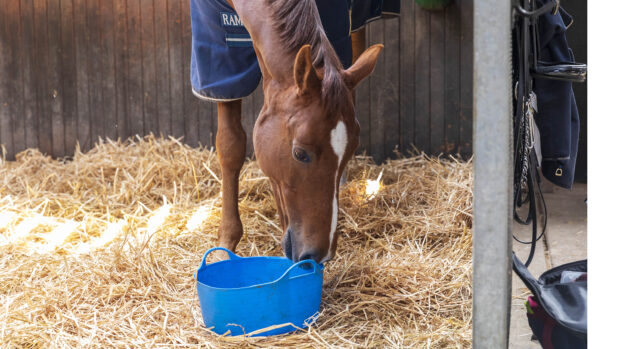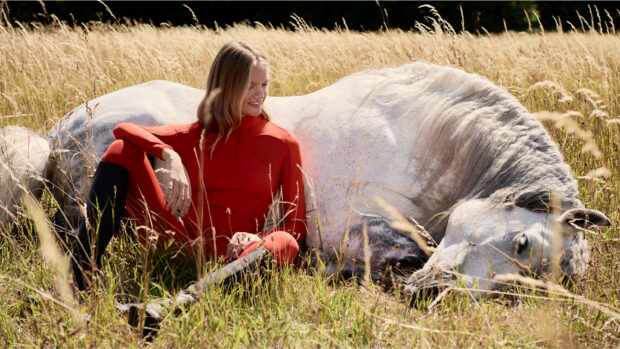What should I feed my puppy?
When considering what to feed a puppy, you should feed the best quality diet that you can – and for me, the top choice when considering nutrition, it would be a raw diet. You want to avoid feeding your dog unnatural foods that contain fillers and chemicals that a dog would not normally eat. I think this is a huge factor for a reduced lifespan and contribute to a lot behavioural issues, too.
Dogs are predominantly carnivorous and, while they need some vegetables, fruit and fibre (which is why dogs eat poo), this only makes up a tiny percentage of their diet. Potato, rice, pasta and grains are nothing more than a bulking agent with no nutritional value. Sweet potato is a good carb, however, and dogs can digest this with no trouble.
When you pick up a puppy, most breeders will give you the same food they have been feeding their dogs. Some big brand names may even supply these to a breeder for free, in the hope that the puppy will then stay on it for the rest of their life.
When deciding what to feed a puppy, you should consider the benefits of each type of diet (below), the health benefits for your dog and how it suits your lifestyle.
What to feed a puppy: raw food vs kibble
Pros of feeding raw
- It’s more natural, appealing and tastier
- Poos are smaller and less frequent, firmer, easier to pick up and smell less
- More digestible and the nutrients are easier to absorb
- Skin, teeth, and coat are much healthier
- Less smell – the farting is minimal and the skin produces less odour-filled oils
- Allergies and itchy skin are rare – unless your dog has a grass or dust allergy
- Better energy
- Better weight management
- Better hydration as raw food has a higher and more natural moisture content

Nutriment Raw Puppy Food
Each tray is a complete meal with all the regular dietary requirements – simply defrost and serve to your puppy.

Paleo Ridge Classic
Paleo’s Classic formula follows the prey model with each meal containing 80% human-grade, outdoor-reared meat, 10% offal and 10% bone.
Downside of feeding raw
- Harder to store – and transport if you take your dog away a lot. Steamed meat, such as Nature Diet or Forthglade, is a good alternative
- Hysteria surrounding a higher risk of bacteria, such as E-coli, and salmonella – raw dog food production is so stringently managed by DEFRA and this risk is rare
- Fear of a bone splinter, swallowing bones whole and puncturing the gut. Feed it frozen to slow your dog down. Bones only splinter if they are cooked
- Too much red meat and offal can cause vitamin A toxicity
- It can make your dog unwell if it is not balanced
Pros of feeding dry kibble
- Quick and easy
- Long shelf life
- Comes in a variety or flavours and colours
- Can be beneficial for dogs with serious kidney or liver problems
- Freeze-dried dog food is better than processed kibble
Downside of feeding dry kibble
- Generally of low nutritional value – it is high in carbs and sugars, and usually full of fillers, such as wheat, yeast, maize, corn and gluten
- Certain kibbles can exacerbate behavioural problems, such as hyperactivity, aggressive behaviour, nervous and fearful behaviour
- Dry, dehydrating and unappealing
- Added synthetic vitamins and minerals are lost due to the high cooking temperatures
- Large, smelly poos
- Skin and ear problems more prevalent
- Takes eight hours to digest
A middle ground?
Feeding your dog is a very personal thing and while raw food is a better option when considering nutrition, not everyone has the space to store it and, in some instances, dogs do not actually like the texture. However, there is a middle ground, which is steamed and nutritionally complete food.
There are some fantastic brands out there now, such as Forthglade, Nature Diet and Butternut Box, so if you wish to give your dog the absolute best you can, but cannot face raw, this is a good middle ground.

Forthglade Variety Pack
Gently steamed meat and vegetables so as to retain as much natural flavour and goodness as possible.

Naturediet Boxes
Complete and nutritionally balanced natural dog food that contains all the essential nutrients your dog needs for a healthy diet.

Butternut Box
Create a personalised plan of steamed and frozen food that gets delivered to your door.
If you wish to feed dry food, then I suggest you seriously consider a freeze-dried type as this holds more taste and nutrition.

Nature’s Variety Freeze-Dried
Complete and balanced freeze-dried food made from natural ingredients and ready to serve.
When to switch a puppy to adult food
Adult food is for maintaining weight and condition and puppy food is for growing. The rule of thumb is around one year old, but if you own one of the largest dog breeds, then you might need to hold off until they are up to two years old. Some manufacturers produce specifically formulated puppy food for small breeds and puppy food for large breeds to cater for their different needs.
You might also like:

Best puppy foods for large breeds

Best puppy food options for small breeds

Feeding a puppy: how much and when?

Best wet puppy foods for satisfaction, healthy development and happy mealtimes

Chew on that: the best puppy chews to soothe gums and satisfy natural instincts

Subscribe to Horse & Hound magazine today – and enjoy unlimited website access all year round
Horse & Hound magazine, out every Thursday, is packed with all the latest news and reports, as well as interviews, specials, nostalgia, vet and training advice. Find how you can enjoy the magazine delivered to your door every week, plus options to upgrade your subscription to access our online service that brings you breaking news and reports as well as other benefits.




